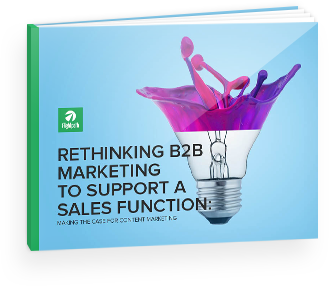Microsoft, Carlsburg, and NFL trust Umbraco as their content management system of choice.

See if Umbraco is
right for you.
Why a CMS?
The primary reason to use a web content management system is to allow non-technical editors to manage content. Without a CMS, one would need to have technical skills like HTML to create and update content on a website. Content Management Systems offer a variety of other functionalities, such as versioning of content, asset management, site search, and form building. They can also support more advanced features such as content personalization and e-commerce, and integration with customer relationship management systems like Salesforce. A good CMS is not just an application for editing content, but a development platform that allows your site to innovate and adapt to your specific needs.Why Umbraco?
There are a lot of web content management systems on the market. Different systems have strengths and weaknesses and no one system will be ideal for all situations. As a digital marketing agency, we’ve found that Umbraco provides the right balance of power and simplicity for both users and developers. We have a number of reasons to back this up, but we’ll highlight five:1. Umbraco is free and open source
Anyone can access Umbraco’s source code in any way so you can’t be limited to what’s available from the product. It also means no financial overheads or lock-in, and a lot of flexibility and freedom for creativity.2. The editor interface
Umbraco has a great interface for editors to manage their content. Editor Simplicity is the overriding tenet of Umbraco, and the Umbraco core team continues to enhance the editor experience as it evolves the platform. Hartvig put it perfectly when Umbraco HQ released Umbraco 7 in 2013: “This is the beginning of a new era for the Umbraco project. It’s the culmination of 18 months of dedicated work, focused on bringing the project back to the roots of Editor Simplicity & Developer Happiness.”3. Customizable
Umbraco is a blank slate. Unlike many other CMSs that have rigid templates and limited design capabilities, Umbraco can be adapted in any way to fit your needs. It was built with ASP.NET MVC, which provides the ability to build custom apps with Umbraco. There are also many great free and open source plugins available. We’ll go into more detail on packages shortly, but for now, check out six of our favorite Umbraco packages.4. Performance and scalability
A well-built Umbraco site performs fast. Umbraco provides built-in caching for content and can easily integrate with content delivery networks (CDNs) for improved performance. Furthermore, Umbraco makes it simple to configure a site to run on a load balanced environment including on auto-scaled cloud services such as Azure App Service.5. The community
The Umbraco community is comprised of great people who are passionate about Umbraco. Umbraco wouldn’t be everything it is without its friendly and dedicated community of 220,000 people. The Umbraco community can be found at:- Our.Umbraco.org – Forums, Packages, Documentation
- Conferences – Codegarden, uWestFest (and other regional festivals)
- Meetups – Flightpath supports the local community by hosting the New York Umbraco meetups
- Twitter, Blogs, Skrift.io and a Slack community channel

Some of our favorite packages
Umbraco has over 1,098 packages of all different sizes and prices that make the CMS much more powerful. The best way to understand the value and benefits of using Umbraco is to look at some examples of how we use Umbraco to meet specific requirements. The following packages will give you a better taste of how Umbraco works from a marketer/editor as well as a developer standpoint:1. Rich content
Archetype: An Umbraco 7 property editor that wraps other installed property editors. By wrapping the other properties, Archetype allows for custom and repeatable fieldset mashups. Nested Content: A property editor that uses the power of doc types to define the list item blue prints. With Nested Content, you can reuse all the standard data types as field editors rather than being limited to a subset of “allowed” types. Grid Editor: Gives the editor the ability to insert different types of content in a flexible, responsive layout. (Note: the grid editor started off as a package and is now built into the core of Umbraco.)2. Blog
Articulate: Provides basic blog functionality such as categories, tags, and RSS feeds.3. Site search
Examine: Examine allows you to index and search data easily and wraps the Lucene.Net indexing/searching engine. Lucene is super fast and allows for fast searching on large amounts of data. (Examine is now built into the core Umbraco package.)4. CRM integration
Forms: From basic contact forms to multi-step questionnaires, form building is easy with Umbraco Forms. The interface is intuitive and allows for workflow creation as well as validation rules and conditions.5. E-commerce
Merchello: Merchello is a high performance, designer friendly, open source Umbraco e-commerce package built for store owners. uCommerce: uCommerce is an e-commerce offering fully integrated with Umbraco for building online stores. Unlike Merchello, Ucommerce isn’t open source, though a free version is available.6. Multilingual sites
Vorto: Vorto wraps any existing property editor and converts it into a multilingual property, allowing for seamless site translation.Umbraco Cloud
It’s not good enough to build a great website – it also needs to be deployed and maintained. Umbraco works pretty much anywhere you can run ASP.NET and SQL Server. With Umbraco Cloud, all-in-one Microsoft Azure hosting makes manual upgrading and painful deployment a thing of the past. Umbraco Cloud provides hosting for up to three environments (development, staging and live) and a content migration process called ContentFlow. ContentFlow allows editors to work and review on a staging environment and deploy content when ready, while developers can easily pull down the latest content and build new features on a development environment and push to staging for review. The Cloud also allows users to reuse existing project components using Baselines so they can spend less hours in project setup, and more on the project itself. Umbraco Cloud automatically upgrades to the latest patch version of Umbraco CMS. For minor upgrades (such as 7.4.x to 7.5.0), when there is a chance of a change negatively impacting your site, the portal provides an upgrade button, allowing you to test first and decide when to upgrade.
Umbraco Cloud includes unlimited storage and bandwidth and licenses for the commercial add ons like Umbraco Forms.
Umbraco Cloud has helped those who don’t even use it. It allows Umbraco HQ to gain insights in running production Umbraco sites, and allows them to identify and fix issues with Umbraco Core faster. Umbraco Cloud also helps fund Umbraco Core.
Umbraco Cloud automatically upgrades to the latest patch version of Umbraco CMS. For minor upgrades (such as 7.4.x to 7.5.0), when there is a chance of a change negatively impacting your site, the portal provides an upgrade button, allowing you to test first and decide when to upgrade.
Umbraco Cloud includes unlimited storage and bandwidth and licenses for the commercial add ons like Umbraco Forms.
Umbraco Cloud has helped those who don’t even use it. It allows Umbraco HQ to gain insights in running production Umbraco sites, and allows them to identify and fix issues with Umbraco Core faster. Umbraco Cloud also helps fund Umbraco Core.
Umbraco vs. other top CMSs
Over the years, we’ve worked with a variety of web content management systems, and have found that Umbraco is the right solution for most projects. But in some cases, other content management systems prevail. Here’s a quick comparison between Umbraco and other top CMSs:Umbraco vs. Sitecore
Sitecore is a commercially licensed product with fees starting at about $15,000. Sitecore is an enterprise solution and gives users the ability to track real-time visitor behavior. Like Umbraco, Sitecore has a large and active community that’s constantly evolving the service.Umbraco vs. DNN
Like Umbraco, DNN is free and open source. DNN is one of the most popular open source .NET CMSs, and powers over 800,000 websites worldwide. DNN can be used as a CMS as well as an application development framework. DNN is easier to get up and running while there’s a learning curve with Umbraco. But Umbraco’s flexibility allows for a leaner and cleaner output.Umbraco vs. Sitefinity
Sitefinity is a paid .NET CMS that has a task-oriented user interface. It uses .NET standards like MasterPages and Controls for template management, which simplifies the setup process for a website’s frontend. Sitefinity has community forums similar to Umbraco’s, but their tech support is typically quicker to respond that Umbraco’s.Umbraco vs. Kentico
Kentico is a .NET CMS that offers free and paid options. It doubles as a Customer Experience Management System and is great for small websites. Kentico has a simple plug-and-play UI, though it’s limited in its design customizability.Umbraco vs. WordPress
WordPress is the most popular CMS and is a PHP based system (whereas Umbraco is built on .NET). What started as a blogging platform grew into a full CMS with a range of plugins that allow for simple website building and design. If you just need a blog or don’t have a budget for a custom designed site, then you might want to go with WordPress and buy a prebuilt WordPress theme.Umbraco vs. Drupal
Like WordPress, Drupal is a PHP based system. Drupal has an extremely active community online and in person at events and meetups. While Umbraco can be used for large and small sites, Drupal is typically used for larger sites. Microsoft developers gravitate toward Umbraco, as Drupal isn’t supported by Microsoft. If you’re a Drupal user and haven’t updated to Drupal 8, check out our article to see when you should upgrade.Finding an Umbraco partner
Now that you know a thing or two about Umbraco, talk with your team to see if it’s the right CMS for you. At Flightpath, we’re happy to be one of Umbraco’s Gold partners. This means that we have certified Umbraco experts in-house, and support the core Umbraco CMS. Our dedicated team of developers and designers is well versed in Umbraco — no project is too complex. Umbraco has 468 registered partners and 55 Gold partners. We’re proud to be the only Gold partner in NYC. If you’d like to chat with our team to see if Umbraco is right for your project, you can reach us here.







